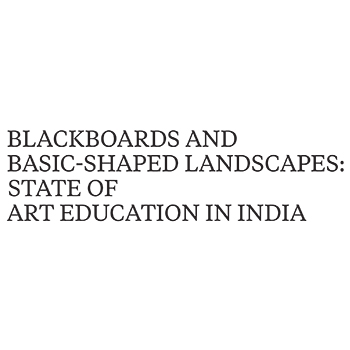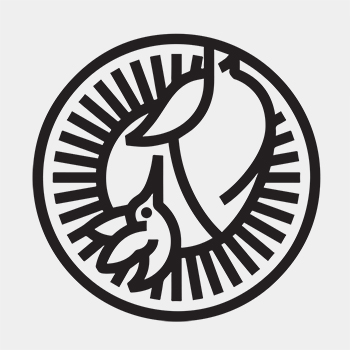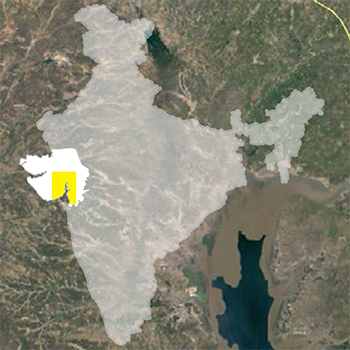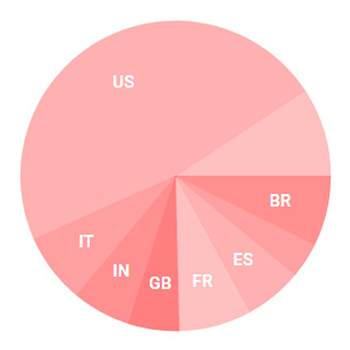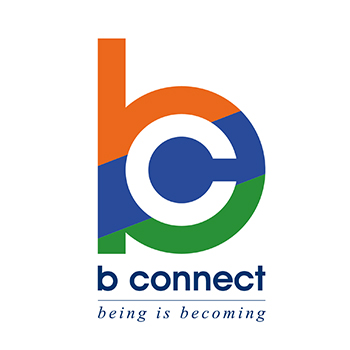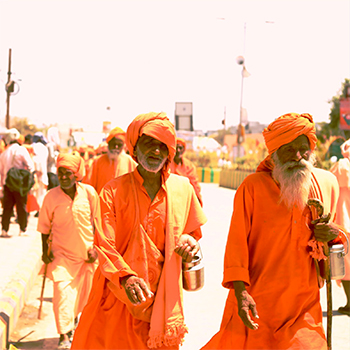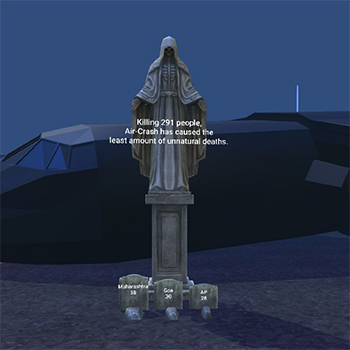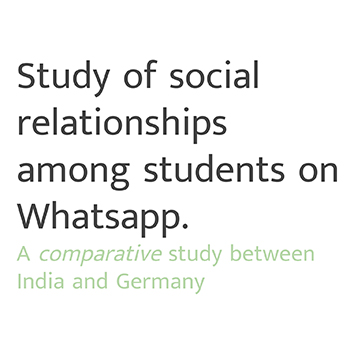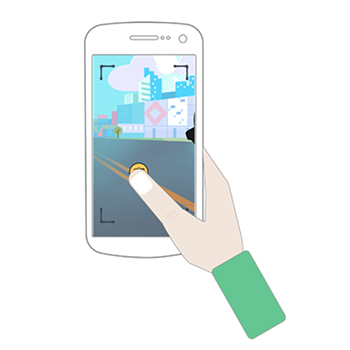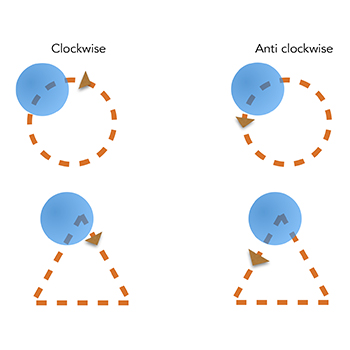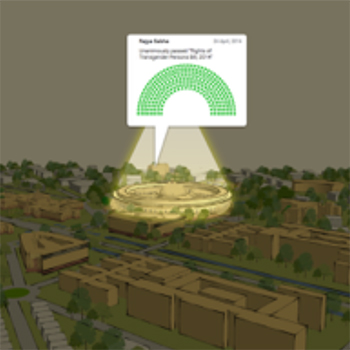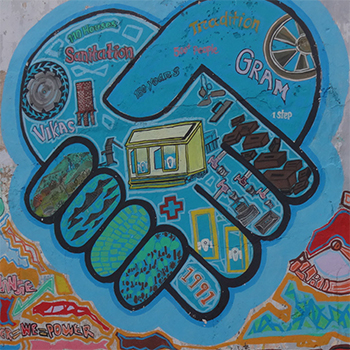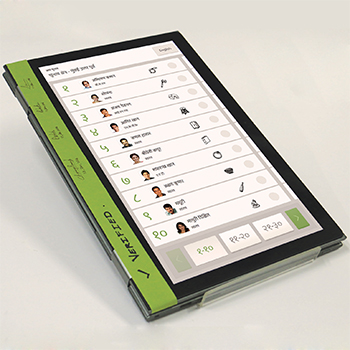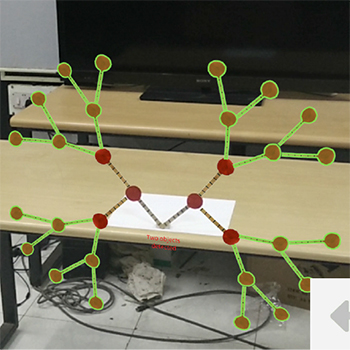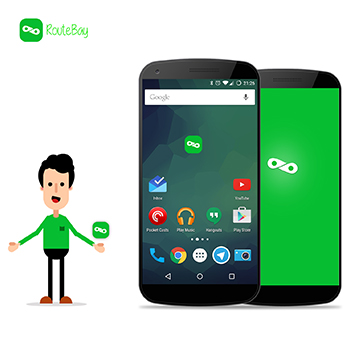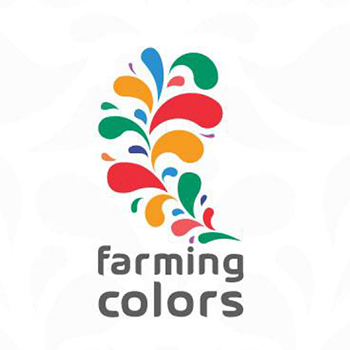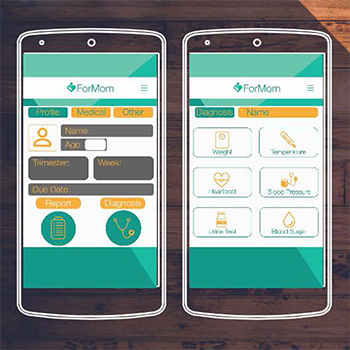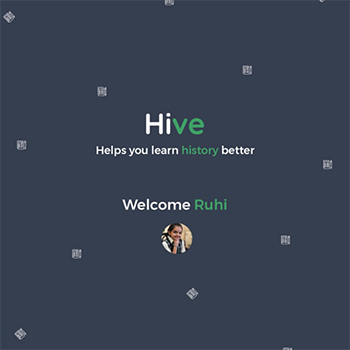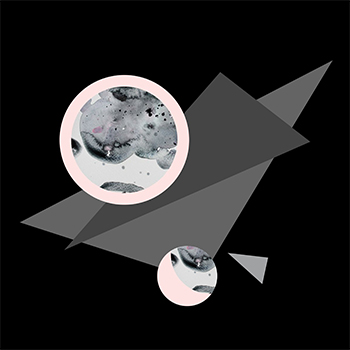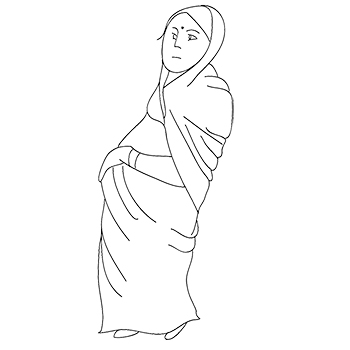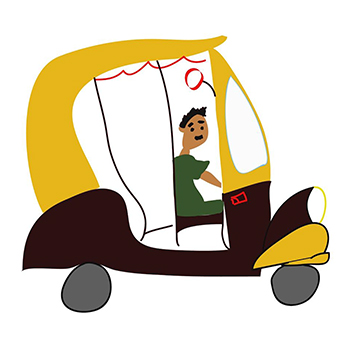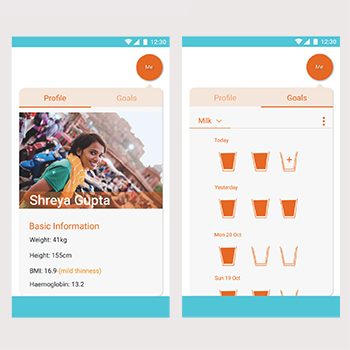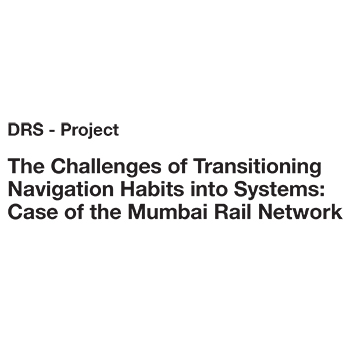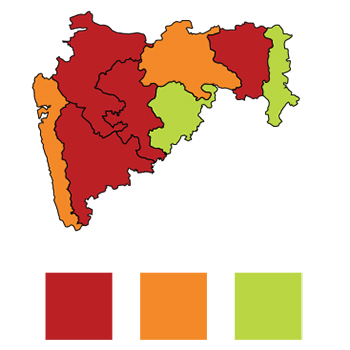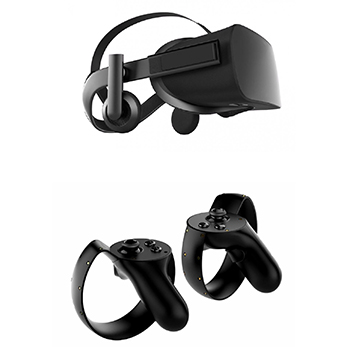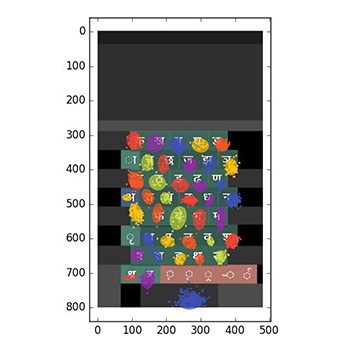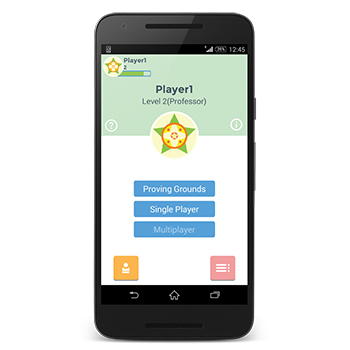Interaction Design
Batch 2015-2017
(50 items)
Interaction DesignBatch 2015-2017
(50 items)
(50 items)
by Abhijith KR
Over 30 million children in India attend classes 7 and 8, with 6.7 million teachers teaching up to secondary (classes 5–7) schools. Of these, art, craft, dance, and theatre teachers are called specialists. Many Indian states have cut down on the number of specialist teachers appointed to fill the vacancies left by retiring teachers as well as new appointments. For example, in Kerala, where new appointments hadn’t been made since the Right to Education Act in 2009, fresh art teacher appointments were made in 2016. The state provides teachers with a comprehensive syllabus, lesson plan, and evaluation criteria. The syllabus is outlined in separate source books for primary (classes 1st to 7th) and high school (classes 8th to 10th). A state resource group (SRG) of teachers, aided by artists and content creators, curates and prepares this material. The state of Maharashtra instituted elementary and intermediate drawing exams in 1880 to help children interested in art take it up professionally. Qualifying these exams helps children pursue careers in art education.
The interviews reveal that art teachers in schools often cater only to the syllabus of such examinations by tailoring class lessons according to the syllabus. The well-performing students are advised and coached separately to appear for the exams. Almost all art teachers we interviewed in Maharashtra taught the exam syllabus in classrooms and conducted private lessons for students preparing for the exams. We realised that the artwork produced by children was a direct consequence of the evaluation-focused instruction provided by teachers; hence, a study of the teachers’ perspective on art education was necessary.
by Abhijith KR
An organisation founded in 1991, Kerala Jaiva Karshaka Samithi is a forum of organic farmers in Kerala. This association has units in almost all districts in the state. Each unit conducts monthly meetings in the field for organic farmers and shares ideas and suggestions for improving their agricultural activities.
In addition to farming, planning meet-ups, and engaging with governing bodies in activism, KJKS publishes a journal called Ore Bhoomi Ore Jeevan (translated as One Earth, One Life, or OEOL), which details new practises in organic farming, features stories from members, provides news of the organisation’s activities, and hosts farm visits across the country, serving as inspiration to the community. I had read some issues of the magazine back in 2012 and felt what they were doing was commendable and worth volunteering my time to improve their design language and streamline the typographic delivery of their sections and stories. My then-job prevented me from devoting any time to the project. When the chance of an opportunity to work in Kerala arose, I decided to see if they were open to letting me work with them in exchange for learning how such intentional communities work and meeting interesting people.
Over email, I proposed a revamp of the KJKS website, building an archive of articles from OEOL and creating a seed database for Kerala based on insights and information from KJKS members. We agreed to meet during their annual state committee meeting.
by Abhijith KR
In an act of civil disobedience against the British rule of India and their misappropriation of power, Mahatma Gandhi and 81 fellow satyagrahis marched from Sabarmati to Dandi in Gujarat, breaking the salt law that criminalised domestic manufacture of salt.
The event is often presented as a textual and other media-rich narrative (documentaries, films, and books). The wealth of data available in March has so far not been presented as a narrative. This project has an exploratory focus on such a data-centric narrative, aspiring to enable a fresh perspective on March.
Through an interactive data visualisation employing numerical and other data (a historical timeline on salt taxes, distances covered, halts, crowds attending meetings, number of women, donations from various groups, and analysis of the content of Gandhi’s speeches along the way), the project proposes a retelling of this historic event in a data-centric narrative to communicate the feelings of nationalistic pride and highlight the significance and rich historical context of the March.
The project, deployed as an interactive website, is shared online, and people are invited to interact with the data. The evaluation takes into account observations, feedback, and suggestions for improvement from the visitors, gauging the impact and fine-tuning the experience.
by Abhijith KR
Primary art education in India is troubled by a lack of infrastructure and insufficient teachers. The syllabus loses its effectiveness while being translated into classroom instruction. Children produce artwork that lacks character and is monotonous. This dearth of variety can be attributed to an absence of divergent thinking and ineffective systems supporting such thinking. We propose a design-led intervention in the form of a prompt generation tool as a step towards building better support systems and affecting change in teachers outlook. The prompts present familiar objects in unfamiliar situations. These help children think beyond the obvious, trying to deal with the situations presented. Our focus was on achieving rich variety in the art produced by children. The preliminary evaluation of our tool shows promise.
by Ajinkyaraj More
Over the last decade, significance and awareness for typefaces and typography have evolved as an expertise and have become a part of mainstream culture. But why have designers started caring so much about typography and fonts? Communication design, especially visual communication, has been an integral part of the human race since the age of primitive man.
Today, it has become an inseparable part of our social and individual lives. The design gives us the visual instantiation of the communication. For any communication to stand out, it needs to have a unique personality that identifies with its purpose, its content, its medium, and its audience.
Importance of typography: -• It attracts and holds the audience’s attention. -• It is reader friendly. -• It establishes an information hierarchy. -• It helps to create harmony. -• It creates and builds recognition.
Bad Typography:
Mismatching font style and brand image can cause confusion. Improper letter spacing and alignment can frustrate the user. A good typography can do great things for your design. But bad typography can ruin the entire graphic design. This is because people identify your idea as a combination of all design elements. Typography, if not done properly, can make the whole design look murky. Bad typography can make your design useless for conveying the message.
Typography is one element of graphic design that can never be left out. Poor typography can have disastrous effects. Graphic designs can fail because of a single misplaced dot. Such is the significance of typography in designing. So, make sure your innovative design ideas include some great typographical decisions too.
Hence Designers give equal importance to typography and the use of colour, images, or abstract graphics. This study aims to observe the various methods that designers adopt while selecting a font.
by Ajinkyaraj More
by Ajinkyaraj More
The government sectors in India have an exhaustive procedure for obtaining various essential government documents like driving licences, marriage certificates, birth certificates, etc. To assist with all these complex processes, the common people do not have an online platform where they can get all the information at once. The lack of proper guidelines causes an overuse of time and energy for a common man who is in search of these procedures. Hence, a large amount of money is spent on mediators, further worsening the situation. Information architecture is not structured properly on the existing portals, and because of this, people think there is a lack of information.
This project aims to handle this general scenario by troubleshooting the problems with the acquisition of driving licences. The instructions and procedures given by the RTO are not clear and are extremely time-consuming in most cases. There is a need for awareness about the specific duration and prerequisites required for each of these steps. Organising all the necessary information in one place will help people understand the process of getting a driving licence from the RTO. This is achieved by creating a web app where clear instructions are given through text and graphical icons, FAQs for every step are available, and relevant status information is provided at every point. Hence, people can use the online portal and apply for the driving licence themselves instead of using the mediators, which in turn saves both time and money.
by Ajinkyaraj More
Indian government records and releases vast quantities of data about us and our surroundings by means of the census, crime, budgets, population, human development reports, etc.
The national crime record bureau under the ministry of home affairs is sharing the crime data at different levels, which can be used to find insight about the crime rate in India and can prove to be very helpful to analyse the cause of crime up to a certain extent.
This project aims to enable an easy way to visualise the crime data in India. This is done by means of a web-based application of the open data visualisation tool provided by the OGD platform. The higher goal is to enable faster and better decision-making by means of data visualisation.
The series of interactive visualisations will help people understand the crime data from India. Interacting with and observing the crime data visualisation will help the user find correlations, causes, effects, and trends.
by Akvil Sakhare
Cinematic VR experiences consist of 360-degree video and ambisonic audio, where the video and audio each account for 50% of the experience. 360-degree cameras capture the visual spherical field of human awareness. Ambisonic microphones record a sound field that can be decoded into binaural audio. Many cameras and sound systems are being developed in the field, but as of now, most 360-degree cameras record in 2D and don’t have spatial audio. The basic idea of cinematic VR is to capture more senses for more presence.
Simhasth-Kumbh Mela is a reunion of Sdhus from all sects of India. It happens every twelve years in Ujjain, Madhya Pradesh, and we captured it in the summer of 2016. It is the largest gathering of people on Earth.
by Akvil Sakhare
The Allegory of the Cave is a theory concerning human perception that claims that knowledge gained through the senses is no more than an opinion and that, in order to have real knowledge, we must gain it.
It describes a group of people who have lived chained to the wall of a cave all of their lives, facing a blank wall. The people watch shadows projected on the wall from objects passing in front of a fire behind them and give names to these shadows. The shadows are the prisoner's reality. One of the prisoners escapes the reality of the cave and witnesses the reality outside. He begins to understand his new world, sees that the sun is the source of life, and goes on an intellectual journey where he discovers beauty and meaning.
This story has been narrated and interpreted in many forms over the years. This project is focused on creating a version of the journey of this story in virtual reality. The project proposes a retelling of the story in a subjective manner so that the person experiencing it feels like he is going through the events in the story.
The project is deployed as a virtual reality experience, which people are invited to experience. The evaluation takes into account observations, feedback, and suggestions for improvement from the visitors, measuring the impact and fine-tuning the experience.
by Akvil Sakhare
In the last few years, virtual reality (VR) has experienced advancement after years of hibernation. As compared to traditional mediums of data visualisation, VR as a medium is significantly different, and the use of VR in data visualisation has not been explored much.
This report explores the process of visualising data in virtual reality by creating a data story by drawing upon various visualisation and design principles in two dimensions (2D) and extending them in three dimensions (3D). By using government data on unnatural deaths, the design process includes exploring the data, generating design ideas, and iterating prototypes to come up with the final design.
The project, deployed as a VR application, is multiplatform and can run as a standalone application or in a web browser. The evaluation takes into account observations, feedback, and suggestions for improvement while measuring the impact and fine-tuning the experience.
The project is an example of what is possible. It shows that VR data visualisations aren’t inherently intuitive but can make more sense if delivered through storytelling.
by Anjana S
The aim of this research is to understand how the communication medium allows for the development of particular patterns in the construction of social bonds among students pursuing technical education. After reviewing some of the current research, we rely on empirical studies of the uses of the mobile phone and mobile instant messaging applications in India to discuss how this particular repertoire of instant messaging relationships has gradually solidified as these technologies have become more widespread and as each additional communication resource has been made available to users. The major purpose of this study is to understand how communication technologies relate to face-to-face interactions from a coexistence and substitutionary angle.
Goffman (1969) makes a distinction between expression and communication. Expression consists of the gestures, signs, vocalisations, noises, and movements produced by individuals, usually involuntarily. These acts remain connected to their sources and have meaning only in their original context. Their meaning is relative to the person who produced them. In opposition, Goffman limits the notion of communication to the use of linguistic signs. In this particular and narrow sense, `communication' is related to symbolic and intentional utterances concerning things, events, or ideas.
In a country like India, students are bound by many social norms and stigmas. This highly influences face-to-face communications, whereas screen-based communication has already broken down huge issues like the opposite gender being able to communicate freely when there is a screen in front of them rather than an actual human [6]. Though this medium was mainly to bridge gaps, students have found their own ways to use it to form social bonds, and this also varies highly with respect to personal friend groups, class groups, family groups, and so on.
by Anjana S
An intern is a student or a trainee who works without pay in the form of a stipend to usually gain work experience or satisfy requirements for a qualification.
Internships are for a temporary period and generally fall into specific categories. Internship opportunities in India are career-specific. College students often choose internships based on their field of study. Students often perceive it as a way to develop their capabilities by practically applying their degree while learning in a professional work environment.
Most students apply for internships during their summer and winter breaks. In some universities, internships during college breaks are mandatory and part of the curriculum. It is common for previous interns to become employees of the organisation once they have acquired the necessary skills and experience.
Generally an internship consists of an exchange of experiences between the student and the organisation. The organisation makes use of the student’s skills, while the student can determine if he or she has interest in a particular career, would like to continue, or wants to create a network of contacts.
In a research internship, a student does research for a particular company or organisation. The company can have something that they feel they need to improve, or the student can choose a topic within the company themselves. The results of the research study will be put in a report, which often has to be presented.
by Anjana S
Time-use studies rely on either participants keeping track of their activities or on data collectors observing and interviewing participants. This is effort-intensive relative to the quality of the data thus collected.
In this project, I attempt to create a time-use data collection tool that is context-aware, effortless for the respondent, and saves data in a research-convenient format. Samay Lekha is a smartphone application that attempts to make entering data as easy as any daily routine for the respondent. The researcher gets an activity data sheet along with the context of the occurrence of the activity and the entries in the form of tags, consequently solving the problem for both the researcher and the participant.
by Anjana S
This project conducted two experiments,
1. An experiment was conducted to investigate micronavigation for the visually impaired. To investigate this, a prototype was created using instructions from a visually impaired volunteer and compared with Google Maps. We found that visually impaired participants navigated with fewer errors, recovered by themselves, and reported less work load while using the prototype with instructions from a visually impaired person than Google Maps.
2. Spatial accuracy in the perception of binaural audio by visually impaired people was investigated. 3D audio recordings were made in the bus stand using binaural microphones at 12 locations. Participants localised sound with respect to angle and depth. Sound sources at 45° and 90° had higher localization accuracy as compared to other angles. Participants could not differentiate between sound sources located directly in the front and back. It was also found that visually impaired participants could differentiate between front and back angles better than their sighted counterparts.
by Chandni Rajendran
by Chandni Rajendran
by Chandni Rajendran
The effectiveness and necessity of interactive tactile graphics have been well established in the field of education for blind children. Developments in production technology are making tactile graphics (TGs) more affordable, but specialised hardware for interactivity is usually unaffordable for many blind students in India.
This design project uses an inexpensive webcam or a camera phone to make TGs interactive. A camera is mounted at a fixed height above the TG, and the forefinger of the dominant hand is marked with a blue-coloured sticker or sleeve. As a user explores the TG with their hands, the marked finger’s motion is tracked and is used to interact with the voice system.
Basic content primitives and interactions are designed based on the unique constraints, affordances, and potential of this novel interactive medium, which serve as building blocks for more complex content. The usability of the medium is studied using simple tasks designed to demonstrate the possibilities.
Many examples of assistive technology developed in the past have been found to be useful for a broader audience as well. Similarly, this medium of interaction can be used to enhance the learning experience for sighted children and for children with learning disabilities.
by Chandni Rajendran
by P.C. Herold
Social responsibility is the one thing that every individual needs to have for the well-being of people in a society. But when it comes to business, many tend to forget those values in the name of profit. There have been many non-profit organisations like NGOs that have tried to focus on this purpose for many years now. But recently, there has been a growing trend of developing sustainable non-profit organisations that do not depend on charity to run the organisation but rather reinvest their own profit for the social cause and are termed social enterprises." According to the Social Enterprise Alliance USA, social enterprise is defined as follows: "A social enterprise is an organisation or initiative that marries the social mission of a non-profit or government programme with the market-driven approach of a business."
The term can be challenging to define as the concept has been rapidly evolving over the years. According to Social Enterprise UK, they have stated it as follows:
"Social enterprises trade to tackle social problems, improve communities, people’s life chances, or the environment." They make their money by selling goods and services on the open market, but they reinvest their profits back into the business or the local community. And so when they profit, society profits."
Some of the existing examples of social enterprise around the world are as follows: -Grameen Bank, which makes small loans to the poor for small business development and other uses. -D.Light designs affordable solar-powered devices that provide an option to people who lack access to reliable energy sources. -Thistle Farms is a social enterprise that treats, supports, and employs women who have survived prostitution, trafficking, and addiction.To explore the social enterprises in India, I took the Jagriti Yatra train journey to various parts of the country with a goal to understand their values and the business model using which they operate in India.
by P.C. Herold
-• Play and learn the alphabets of English or any native language using the ball. -• For each bounce of the ball or while catching the ball, it says out loud the alphabets in sequential order. -• One can also change the language preference or numbers through an Android mobile app. -• Kids of the age group 2–6 years who are yet to learn basic alphabets or numbers could play with this ball.
by P.C. Herold
by P.C. Herold
In the middle school years, the period when mathematics concepts become harder, the dropout rate of students increases in India. The goal of the project is to develop ways in which students could learn abstract concepts in mathematics in a concrete, interactive manner with the real world. To realise this, the middle school topic of "Exponents and Powers" was chosen for study.
A study on the content of the topic and current teaching methods revealed interesting user needs in the areas of visualising, remembering, and using the concepts, as well as a need to have a better connection with the real world. The solution of this project is an in-home activity using an augmented reality-enabled smart-phone application along with common physical objects like erasers, ice-cream sticks, etc. The application has the capability to augment duplicates of the objects detected in the real world with the smart-phone camera and use those visualisations to perform various tasks with respect to exponents and powers. These visualisations, which are augmented with real-world objects, help students better connect with abstract concepts by enriching memory recall and improving their emotional connection with the subject. The application has a small video window where the instructor walks you through the content and associated physical tasks. The solution was evaluated for its effectiveness in helping the students gain cognitive abilities as follows: remembering facts, remembering concepts, using concepts, remembering procedures, and using procedures. The evaluation results ascertaining the improvements in memory recall and emotional connection with mathematics were used to conclude the effectiveness of this solution.
by Naveen Rawat
The project started with the idea of stitching audio and visuals together in a way to explore locations with the help of both sound and images. To visualise the information or the sounds, the first attempt was to capture the places, both through a camera and a recorder.
For one month across three cities, images and audio were collected. The aim was to capture the essence of different places across Delhi, Mumbai, and Dehradun, for example, the famous markets of Delhi, the local cuisine of Mumbai, and the temples of Dehradun. These places keep within themselves the essence of these regions.
The attempt is to empower users in a way where they can identify the locations on the basis of the sounds. Thus, they will be able to map these sounds in a better way. In the future, such systems can help locate areas on the web when only audio feed is available. This would give way to research in areas of geotagging, where anyone can upload a local sound and tag it to a specific location on the map. This would help to create immersive audio guides where people can go around a city collecting audio clues and thus exploring the city using the image suggestions and then finding those places in the real world.
by Naveen Rawat
The objective of this project was to gain experience in a special education environment and learn about the dynamics between educators and children with developmental disorders. It was aimed at understanding the difficulties faced by children and how those are addressed by the special teachers and assistants.
This opportunity helped me form a mindset and generate empathy for the people involved in this ecosystem. From the first semester, when we had the user studies module, I was deeply interested in going among the users and knowing the difficulties at ground level. I learned that talking face-to-face with people reveals so much about the issue at hand. This is why I chose this NGO for this objective, so I can learn how assistance is provided to the young ones through intervention and effective, tailored teaching methods. It helped me understand how creativity and fun can provide children with opportunities for free expression, creative thought, and problem-solving skills.
by Naveen Rawat
Wayfinding relates to the decision-making process while going from one place to another and making important decisions along the way that help to traverse the path. We constantly confirm our position while approaching a destination or a nearby location. This is an integral part of our day-to-day lives.
Indian cities are laid out in a very different way than the grid-like structures of western cities. We have an organic growth of infrastructure in most of the cities. The reliance on maps for navigation has always been low; rather, asking around is the norm. What makes us comfortable with this way of navigating? One of the reasons is cultural. People are not used to maps. Giving directions in India is an idiomatic art, well-rehearsed but rarely done following formal strictures.
Nobody says, "Head south." Rather than oral directions, use a series of routes and familiar landmarks with additional information in the vicinity of the landmark to better guide the user.
Using this knowledge, a hypothesis was created revolving around the concept that if the existing way of moving people is used rather than pushing a solution that works well in grid-based cities, a simple yet familiar concept of wayfinding can be created with a focus on landmarks and the spatial distances between them.
The final concept focuses on implementing subjective wayfinding. Simply understand the user's mental model and offer a meaningful understanding of the environment that can be easily comprehended. This combines context-aware information about local landmarks with simple schematic maps imitating user behaviours in real life. Each upcoming landmark in the journey is combined with sound, image, and other data that makes the process more subjective and makes identifying and remembering landmarks easier. The solution helps the user to utilise local information that is available within a community and finally create a shared database of familiar routes.
In a simple schematic map, landmarks are used as guiding points from one checkpoint to another. Landmarks are points where a user can get oriented through visual and audio help. Each landmark has a corresponding image and other data associated with it. Users create routes and share them with the community. This collective effect makes available a larger depository of easy-to-follow maps that anyone can use and update.
For evaluation, users will be asked to reach destinations on selected routes using the design and other existing solutions. The aim is to know how comfortable users are finding destinations with the given interface and identifying landmarks to take turns and make routing decisions. How easily one can remember the route and create their own landmarks.
The design gives way to future work, including more rich data that can be kept up-to-date in a changing environment. Such designs can leverage our existing ways of problem solving and enhance them with technological intervention. We don’t need to change what already works well; rather, we should find a technological solution that can coexist with and complement what we already have.
by Naveen Rawat
As of January 22, 2013, there were 228,994,454 students enrolled in recognised schools in India, and it is believed that 15% of the total enrolled students are dyslexics, which brings our count of dyslexic Indian children to nearly 35 million. Dyslexia is the most common type of learning disability that affects one in every five children and creates major difficulties in learning to read, spell, and write correctly. Struggle in distinguishing alphabets, words, and learning the connections between written letter patterns and their sounds leads to poor reading and learning at school. Such children try to avoid school time and any confrontation that involves reading. They are labelled as ‘dumb‘ or ‘stupid’ when they actually have average or above-average IQs, and some are even gifted.
The social stigma of a learning disability often prevents parents from seeking appropriate remedies for children with dyslexia that can actually help their children. Struggling to keep up with the progress of the class, such children are labelled as slow learners or dumb. This is where the first strike of dyslexia starts having a major negative impact that continues to unfold for a long time. Such children are promoted without special attention until their first public exam, in the 10th grade, and the issues start snowballing. This is especially troubling as early childhood and primary education are crucial to long-term success. A properly directed education for such children in these early years helps build foundational skills to cope with the difficulties that affect the rest of their learning and lives.
Here I have attempted to deal with these learning issues considering the barriers the child has due to low confidence and direct instruction-based teaching at school. I have put together a system to develop interactive applications that direct focus on the phonological deficit in dyslexics. I have followed the approach to building letter-sound relationships through engagement and positive reinforcement.
Key insights were derived from long interviews and sessions with educators, children, and psychologists at multiple locations in Mumbai as a part of extensive user studies.
by Nazreen O Nizam
The aim of this research is to understand how the communication medium allows for the development of particular patterns in the construction of social bonds among students pursuing technical education. After reviewing some of the current research, we rely on empirical studies of the uses of the mobile phone and mobile instant messaging applications in India to discuss how this particular repertoire of instant messaging relationships has gradually solidified as these technologies have become more widespread and as each additional communication resource has been made available to users. The major purpose of this study is to understand how communication technologies relate to face-to-face interactions from a coexistence and substitutionary angle.
Goffman (1969) makes a distinction between expression and communication. Expression consists of the gestures, signs, vocalisations, noises, and movements produced by individuals, usually involuntarily. These acts remain connected to their sources and have meaning only in their original context. Their meaning is relative to the person who produced them. In opposition, Goffman limits the notion of communication to the use of linguistic signs. In this particular and narrow sense, `communication' is related to symbolic and intentional utterances concerning things, events, or ideas.
In a country like India, students are bound by many social norms and stigmas. This highly influences face-to-face communications, whereas screen-based communication has already broken down huge issues like the opposite gender being able to communicate freely when there is a screen in front of them rather than an actual human [6]. Though this medium was mainly to bridge gaps, students have found their own ways to use it to form social bonds, and this also varies highly with respect to personal friend groups, class groups, family groups, and so on.
by Nazreen O Nizam
It was one of our biggest dreams to set up our own farm and produce everything we needed, so that we could eat safe and fresh food daily. We soon realised that this is what a lot of people want these days. On one side, most of the farmers are getting exploited, while on the other side, consumers are unable to find fresh, safe-to-eat organic food. Being technologists by profession and farmers at heart, we thought of connecting farmers with consumers.
The model that we build is like a farm-sharing model. The farmers plan their production based on our customers preferences. Whatever is produced on the farm during that specific season will be shared among our customers. This gives customers the feeling of having food produced on their own farms.
by Nazreen O Nizam
Access to healthcare facility is a fundamental problem with the vulnerable communities living in urban India. The rise in urban population below poverty line has caused alarming concerns in the last decade. One of the main concerns being access to healthcare facility in India. The access to healthcare is confined to the local knowledge of health center or being a resident in a area. With high rise in urban migratory population, existing ecosystem is not able to cater to the needs of the patients.
Among the vulnerable population in the country maternal well being suffer severe health risks. India is one of the countries which show significantly high rates of maternal and newborn deaths. The project aims to investigate the possibilities of a design intervention to improve maternal well being among the vulnerable communities in the country.
There are three different stages in maternal well being: Pre Birth Child Care, Institutional Delivery Care and Post Birth Child Care. Studies have proved that proved that improvement in pre birth care can improve the other stages of maternal wellbeing. The project aims to understand the healthcare ecosystem of ANC in India. And how mobile health (a term used for the practice of medicine and public health supported by mobile devices.) can contribute to the pre birth care services in maternal healthcare.
The project focuses to demonstrate that the mobile health intervention (in the form of decision support, reminders, educational messages and report) will have positive impact on delivery and ANC practices in health facilities possibly through the monitoring of health workers.
by Nazreen O Nizam
History education in India is still dependent on a bookish way of learning. Syllabus-based learning is not effective enough to validate historical thinking among students. Hence, a design-led intervention through which a digital assessment system could promote better historical understanding and learning among students in middle school is the goal of the project.
The assessment system on a digital platform aims at creating better historical thinking within the framework of existing textbook chapters. For this, the potential knowledge bank of the textbooks was evaluated on the basis of existing learning strategies and frameworks in historical learning. From this, possible question types were identified that could be looked at through a digital platform. After this, the additional or supporting tools for the questions were designed. The assessment system aims at creating better classroom interaction among teachers and students to promote history as more than just a hypothetical and non-concrete subject. Furthermore, the tool intends to create an answering space using visual, textual, and timeline components. This is to grasp how better historical thinking can be inculcated in a classroom over the existing practises, which are mainly from textbooks.
by Nupur Aggarwal
Farmers in the Indus Valley were the first to spin and weave cotton. In 1929, archaeologists recovered fragments of cotton tepees at Mohenjo-Daro, in what is now Pakistan, dating to between 3250 and 2750 BCE. Cottonseed finds at nearby Mehrgarh have been dated to 5000 BCE. A terracotta fragment with fabric impressions was discovered from that era and provides clues on the types of weaving carried out by the ancient Harappans. Literary references further point to the ancient nature of the subcontinent’s cotton industry. The Vedic scriptures, composed between 1500 and 1200 BCE, allude to cotton spinning and weaving.
In ancient times, Paithan was a prosperous trade centre called ‘Pratisthan’ (the city of progress) that exported rich fabrics and precious stones to faraway lands as it fell on the Silk Road. It was a good medium for the exchange of goods like the richly woven textiles. Historians have noted fine paithani sarees with delicate gold and silver thread work being sold in Greece in exchange for gold between 200 and 400 BC.
During the 15th century in Kashmir, Zain-ul-Abedin encouraged the exchange of weavers with Iran, Turkey, and other lands. The weavers who came to India immigrated to Delhi, Agra, Benares, and other parts of the country. During the 17th and 18th centuries, brocades continued to be in extensive use for regal costumes as well as for making temple canopies, as evidenced by the contemporary Mughal paintings.
by Nupur Aggarwal
E-learning is fast becoming a choice for learners in various domains. E-learning as a choice, especially in developing countries, has potential for the users and an opportunity for the HCI designers. In order to capitalise on this opportunity, it will be helpful for HCI designers to look at the attitudes and motivations that make online learning preferable, along with the attitudes and motivations that make offline learning preferable. This research paper reports both quantitative and qualitative methods used to understand attitudes and motivations. While attitudes have been measured using the semantic differential technique, motivations have been dug into using deep probing with unstructured and open-ended qualitative interviews.
by Nupur Aggarwal
Automotive technology is increasingly advanced, and along with these advancements come major privacy concerns for drivers. This is especially true for modern, connected cars equipped with infotainment and telematics systems that can collect substantial amounts of sensitive information. As cars begin to communicate wirelessly, the market for vehicle data is on the horizon. There is a rush to control this data, and many vehicle manufacturers, who control this data at present, aim to become the service provider for all your car-related needs.
Connected cars on the market that are equipped with internet access are able to send and receive data, enable tracking, and communicate private information about consumers. Various smartphone applications as well as manufacturers and service providers have access to a huge pool of data that can be transmitted from a car, and there is a clear disconnect between what is being tracked and what citizens are willing to accept when it comes to car data.
This not only needs strong data protection, but consumers also have a right to know what data they are sharing in order to make informed decisions. Several user studies reveal that consumers feel the need to control their data and the service provider they choose to share it with. They also must have the possibility to shut off communication when possible. Along with the user needs and technical requirements, this project aims at formulating a concept for an interface for self-controlled privacy in connected cars.
A catalogue of requirements for the concept is presented after studying the available literature and the user studies, which examine the user's intentions and expectations from privacy in a car. Based on the requirements listed in the catalogue, a concept for step-wise privacy settings is suggested, which walks the user through the possible changes they can make to ensure privacy. A user-centred approach is followed while creating an interface for the vehicle and an accompanying mobile phone application. The final results are presented along with an analysis of the requirements that are being fulfilled or not by the suggested concept.
by Saloni Mehta
Visual representations such as photographs, diagrams, illustrations, and even textual formatting are essential for supporting student comprehension, retention, and application in education.
Visual representations are not only used to fill up space and to look pretty; they also help in better learning because they stimulate the student’s spatial intelligence, increase the motivation to learn, and improve the scope for dialogue and teacher-student and student-student discussions.
The purpose of images varies slightly with what subject is being taught. In science, especially, one of the primary purposes is to help clarify and build an accurate conceptual model of the concepts being taught.
by Saloni Mehta
by Saloni Mehta
Traffic accidents involving pedestrians have become a major problem across regions with high population density and rapid urbanisation. To deal with the increasing number of pedestrian–vehicle conflict points, many foot-over-bridges (FoBs) have been constructed. However, instead of using the available FoBs, people jaywalking (crossing busy roads, ignoring running vehicles), is now a common phenomenon.
To make everyone use the bridge, a change in pedestrian behaviour is needed.
In this project, we influence behaviour by studying and understanding current behaviour patterns and then using social influence as a behaviour nudge. Using the junction opposite IIT Bombay’s main gate as the site for intervention and by means of a community spotfix event, an attempt is made to persuade pedestrians to not jaywalk without being paternalistic or introducing rules and policies.
by Saloni Mehta
Several million rural first-generation learners are now a part of India’s massive education system. They get negligible help at home and often have less-than-motivated teachers at school. Moreover, the curriculum is largely designed by urban natives to enable people to live in an urban society. This disconnects the rural student’s classroom learning from their real-life experiences and raises questions about the relevance and utility of learning.
In this project, I work on developing a learning tool to supplement school education by enabling self-learning. The tool is an aggregator of concept-wise interactives that take an application-first approach. Each interactive would incorporate local context to improve relevance and add interactivity for increased engagement with content, which provides conceptual clarity.
Using the context derived from primary field studies, I developed a sample application for teaching ‘lenses in the human eye'. It uses a guided discovery approach that combines both direct instruction using animated audio-visuals and experiential learning via manipulatable interactive screens that simulate a locally relevant real-world application.
The prototype was evaluated for usability and engagement using think-aloud tests with students from villages in Rajasthan. After that, they were asked applicative questions in the form of a real-life scenario. This preliminary testing indicated a positive impact of interactivity on improving engagement with content. The self-paced learning style also allowed them to refer back to and replay the content till the student perceived conceptual clarity. The testing also uncovered some issues with the content, presentation, and interactivity. Design ideas to overcome them were identified and implemented.
by Shreya Gupta
Healthcare is one of the most challenging issues the country faces today. Primary, secondary, and tertiary healthcare centres are all buckled under the pressure of too many patients and too little staff. The government allocates, arguably, a poor share of financial resources to the health budget each year. Consequently, the functioning of health centres has always been a source of curiosity for researchers and policymakers as to where precisely it is lagging. It is interesting to understand the functioning of a tertiary health centre, i.e., a hospital, in order to know how such budget allocation actually affects the patients and other stakeholders in the health sector.
Narrowing down to gynaecology, the country has one of the worst maternal mortality rates in the world. It was 174 per every 100,000 live births in 2015. As a result of poor maternal health, the child mortality rate is also one of the lowest in the world and is comparable to those of sub-Saharan countries. As per the 2016 census, it is 40.5 per 1,000 live births.
The major result of such poor statistics is the rampant sexism that is practised across the country. States like Uttar Pradesh and Bihar, which are poor and also house people with retrogressive mindsets, fare especially poorly because they do not feed and take care of the girl child properly. Resultantly, the mothers as well as the infant girls pay the price in health due to poor social setups.
by Shreya Gupta
The aim of the project was to handle the pre-production for a documentary film on the theme of "Autowallahs in Mumbai".
My task was to hunt for interesting characters that captured the essence of the issues and problems faced by this demographic and extract interesting stories from the people selected.
The aim of the project was to tell the untold story of a group of immigrants in Mumbai who are visible to everyone and are an essential part of the transportation sector but are rarely acknowledged for their efforts and sacrifices.
by Shreya Gupta
Non-communicable diseases would become the leading cause of death in the world by 2030. Most of these diseases are caused by poor dietary habits, addictions to tobacco and alcohol, and a sedentary lifestyle. The aim of the project is to focus on people's dietary habits. What people eat in their 20s determines the likelihood of them contracting lifestyle diseases in the subsequent decades.
The idea is to persuade people to eat healthy. The target group is IIT students, who are young adults in their 20s. They have the opportunity to get into a healthier lifestyle before they enter the working phase. The design solution focused on making healthy food more visible.
While most students believe that the mess food is healthy, a lot of them confess to having unhealthy lifestyles due to erratic routines, skipping meals, etc. Some believe that there is a dearth of healthy food on campus. As a matter of fact, the mess councils in all the messes have to abide by certain nutritional standards while designing their menus. This implies that the messed-up food is predominantly healthy and balanced.
So what could be done in order to promote a healthy diet? The design solution focused on charting a merit list of food items during each meal as per the user’s BMI. This means that for an underweight user, the menu would look different from that for an overweight user. The healthiest food suggestions occupied the green spot, while the unhealthiest ones occupied the red spot. The healthiness of the food items is defined by calculating the protein, carbohydrate, and fat content of each.
While research shows that people modify their food consumption if they are exposed to the caloric or nutritional content right before they make purchase decisions, it is ambiguous as to where the appropriate trigger lies in the case of food that is not directly purchased, such as in a hostel mess. The project attempts to solve the problem of the visibility of healthy foods as well as the viability of the health prompts so that the user can be persuaded into making healthy food choices.
by Shreya Gupta
by Varun Mevada
Crowded platforms, long queues, noisy compartments, busy bridges, and a never-ending spirit are the most common visuals at any station in Mumbai and its local trains. EMUs, or electrical multiple units, which are otherwise known as the lifeline of Mumbai—Mumbai Local, carry about 7 million people daily.
The density makes these bridges, ticket counters, platforms, train compartments, etc. unique threshold spaces. The density forces the population to behave in a certain manner; over a course of time, these behaviours transform into habits and then into unsaid rules or norms after being accepted by the masses.
The process by which new behaviours become automatic is called habit formation. Old habits are hard to break and new habits are hard to form because the behavioural patterns we repeat are imprinted in our neural pathways, but it is possible to form new habits through repetition (habits, wikipedia).
One of the countries that faces a similar problem with density in local transport is Japan. The Tokyo Metro transports 8.7 million people daily. They manage the punctuality by assigning official pushers, who push the passengers to squeeze in so that the doors of the train can be shut. The other city with high public transport use is London. One rule that has been developed over time is that when you use the escalators to enter or exit the station, the right lane is the ‘fast lane'. You cannot stand in the lane if you are not willing to climb along with the movement of the escalators.
People usually want an easy way out of anything. If the bridges are too crowded, why not jump the tracks (as seen in India)? Infrastructure planning plays a crucial role in determining these habits. The moment you allow people to jump onto tracks and move to another platform, you give them the leeway to perform such tasks. On seeing this habit, the railway authorities erected fences between the tracks,dissuading commuters from jumping tracks. This did work for a while, but then people started to jump over them through the train gates on the other side of the platform.
by Varun Mevada
by Varun Mevada
The current population of Mumbai stands at 12 million people. The density of the city stands at 20,637 sq/km, making it one of the most densely populated cities in the world. For a city with these statistics to function efficiently, it needs enormous effort from the civic authorities. The city’s lifeline—Mumbai’s local train—is the crucial mode of public transport. It aids 7.4 million people per day [social cops]. Considering the amount of traffic that uses this service, ticketing is a core aspect of the entire operation. Today, the modes of ticketing have expanded, but there is still a huge amount of load on the traditional ticket windows.
Currently, there are five different methods to book an unreserved travel ticket for the Mumbai local, but most of them remain unexplored by the audiences due to various reasons such as lack of knowledge, intimidation by technology, and the low standards of the automatic ticket vending machines. The project focuses on exploring these modes of ticketing and their impact in the real world and intervening in the ticketing system, trying to improve it and reduce the user's effort.
"by Varun Mevada
In today’s digital age, data is considered to be prime information. Huge data sets can provide immeasurable insights in terms of visualising trends.
In a populous country like India, crime has been one of the major matters of concern. The traditional methods to collect and store data prove to be time-consuming given today’s age and amount of information. Various mediums and methods of storing and retrieving data can save the day for the governing bodies.
There are huge benefits of data visualisation technology to the police force as well as the community. These visualisations help them see trends over the years in no time, and they can see the bigger picture. Without the ability to see the bigger picture, critical information can be missed, which can lead to incorrect or no action at all. This helps them prepare for any suspicious activity or crime. Strategic reports, tactical reports, and visual analytics can be swiftly created and viewed across multiple platforms.
When a single channel of information is layered across other layers such as traffic, geospatial, and weather, it can lead to deeper insights and co-relations between events.
by Vivek Paul Joseph
Today, there are a variety of devices or platforms that are capable of providing virtual reality (VR) experiences. Some examples are: Google VR (cardboard and Daydream), MS Hololens, Oculus Rift, HTC Vive, etc. Each device presents an opportunity for a unique way of interaction between the user and the system. This largely depends on the hardware capabilities and limitations of the device itself and, of course, the imagination of the designers or developers developing applications for these devices.
This study aims to explore the different kinds of interactions that are currently being employed by designers or developers across a variety of applications across different platforms.
by Vivek Paul Joseph
by Vivek Paul Joseph
Swarachakra Malayalam is an open-source keyboard for Android. It generates a steadily growing database of Malayalam words. This word database could be a resource that can be used to fuel the development of new tools for the language. But the database (corpus) contains incorrect or unusable words (for certain contexts). Tagging these words becomes an important task to make this corpus usable by ‘cleaning’ the corpus.
Due to the complexity of the language's grammar paired with its agglutinative property, it is challenging to programmatically categorise the words. But while this may be challenging for a computer, it is easier and even enjoyable for a person who knows the language. But due to the large number of words in the corpus, it becomes a huge task. The aim of this project is to crowdsource, through gamification, the cleaning of the corpus.
During the course of the project, the corpus cleaning activity was broken down into multiple steps and turned into minitasks. Then multiple possible ways of gamifying these tasks were looked into. After weighing the pros and cons of each, one of the ideas was designed, detailed, and developed into functioning prototypes. The prototype version 1 had minimal gamification elements (only level scores and player levels). The prototype version 2 has more gamification elements like scores, player levels, achievements and badges, leaderboards, etc. The proto V1 acts as a benchmark against which player engagement levels of proto V2.
While the proto-V2 doesn’t have all the gamification elements that were explored, it lays a foundation upon which the others can also be added. The effectiveness of the game in cleaning the corpus and the effect of these gamification elements on player engagement were evaluated using a functioning prototype. Out of the gamification elements that were tried out in the prototype, the tutorial levels, game stats, achievements, and leaderboards seemed to have a direct positive impact on the players’ engagement levels. Identifying the impact of the other gamification elements will require a longer evaluation with a larger user base. In the bigger picture, the outcome of this project would be one of the several layers of filters that can be used to clean up the existing database and create a comprehensive database of words.
by Vivek Paul Joseph
Smartphones have become an integral part of the lives of a major section of the population. Smartphones help their users get a lot of work done on the go and stay connected to people and information. But this sometimes comes at the cost of some nagging issues. One such issue is that of numerous and often useless notifications. These could range from promotional messages to group chats to app notifications. Research suggests that such interruptions have the potential to adversely affect the productivity of the users as well as raise their anxiety levels. While there are methods by which the user can block or silence such notifications, it requires the user to actively tune the settings to meet their requirements. But there are users who lack the knowledge or patience to do so. This is also due to the fact that they don’t realise how these notifications are disrupting their work or lives.
In this project, an attempt is made to develop a framework that can reduce the number of low-priority smartphone-generated interruptions. This system would be personalised to each user since it would learn from the individual’s behaviour. This framework includes the interactions through which the user can communicate their opinion about a notification, an underlying algorithm that would learn from the user input and identify low-priority notifications, and finally, methods through which the user can interact with the low-priority notifications. This framework is being proposed as an expansion to the Android OS. The primary research was done in the form of semi-structured interviews and a data collection tool to collect notification data from users.
Separate prototypes were developed to demonstrate the working of the UI elements and the working of the algorithm. The prototype was used to collect data from eight users and was evaluated for accuracy in the identification of low-priority notifications in both long-term and short-term use cases.
